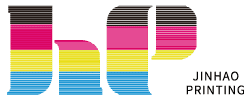The amazing printing process used by China book printing factories.
The amazing printing process used by China book printing factories.
Book printing is an important part of the Chinese book industry. It involves printing books, newspapers, and other materials. China’s well-known traditional printing factories produce some of the world’s most popular books.
list of The printing process used in Chinese book printing factories
In Chinese book printing factories, the printing process is used to print books. The printing process begins with the introduction of the typeface and font. This allows for a consistent look and feel throughout a book. After that, text and illustrations are printed using different processes, such as offset lithography or lithography and inks. Finally, finishing touches are applied, such as cover design and binding.
The printing process used in Chinese book printing factories is typically a three-step process: the pre-pressing of the paper, the lithography of the images, and the pressing of the prints. This article will focus on the pre-pressing of the paper, which generally takes place in an 800- to 1,200-square-meter room at a Chinese book printing factory.
The pre-pressing process includes cutting and folding the paper into small sheets, then forming it into a stack that can be sprayed with a hot solution called fixative. The fixative helps to prevent wrinkles and other distortions during press production. Next, sheets are filled with ink and bespelled onto one or more dies that have been placed on top of each other. Finally, die proofs are created to ensure accuracy and compliance with published design instructions.
The advantages of this printing process
The advantages of this printing process are that it helps to save paper, reduces the amount of waste created by printing, and produces a print that is more accurate and consistent than if it were printed using a traditional printing process.
Lithography is a printing process that uses small amounts of pigment in an image to create a print from sheet material. It is slower and more difficult than other printing processes, but it produces high-quality prints. Lithographers use two types of lithography machines: a photoengraving machine and a relief printing machine. Relief printing machines produce images that are large enough to be created into prints.
Pressing prints is a popular printing process that has many advantages. One of the most important advantages is that it produces high-quality prints. Another advantage is that it is very fast and easy to print.
How the process works?
The traditional way to print a document is by pressing the paper against the printing press. This process creates a physical imprint on the paper that can be read by a printer.
Lithography is the printing process of making images on a large scale with a limited number of particles per inch. Images are made by scanning a photograph or other image intolet onto a small sheet of paper that has been specifically designed for lithography printing. The image is then heated, causing the tiny particles in the image to become vaporized and fuse with the paper.
The printing process of a document is composed of pressing the prints and then reading the document. The presses involved in the printing process can vary in terms of their size and capabilities. They include, for example, an offset press, a traditional press, or a digital press.
The presses used in different parts of the world have different advantages and disadvantages that affect how the prints are produced.
In conclusion,the amazing printing process used by China book printing factories is one of the most skilled in the world. This allows them to produce high-quality books that are sure to impress anyone who reading them.



